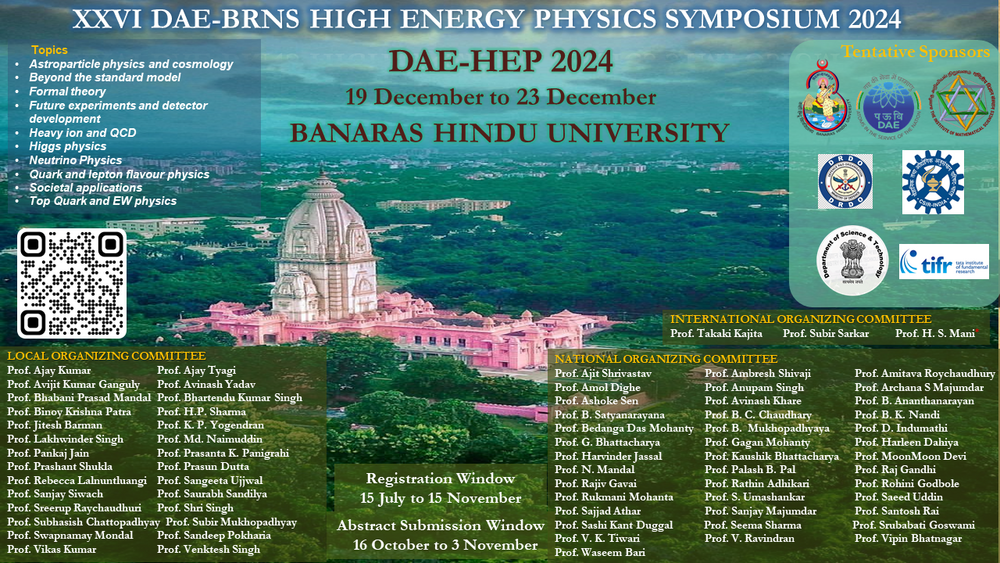Speakers
Description
We have estimated the induced electric field in quark-gluon plasma (QGP) due to its thermoelectric effects. At present, the relativistic heavy-ion collisions are capable of creating QGP, a locally thermalized medium composed of quarks and gluons.
During the space-time evolution of the QGP medium, interesting thermoelectric phenomena occur due to the presence of electrically charged particles (quarks) in the QGP medium. These phenomena result in the generation of an electromagnetic (EM) field within the medium, even in central heavy-ion collisions. In peripheral collisions, the presence of a spectator current at the early stage generates a transient magnetic field and disrupts the isotropy of the induced electric field. For numerical estimation of the induced electric field, we used a quasiparticle-based model that incorporates the lattice quantum chromodynamics (lQCD) equation of state (EoS) for QGP. The cooling rates used in our calculations are derived from Gubser hydrodynamic flow, while the thermoelectric coefficients—such as Seebeck, magneto-Seebeck, and Nernst coefficients—are crucial for estimating the induced electric field. Furthermore, we explore the effects of an external time-varying magnetic field on the induced electric field and also consider the quantum effects of Landau quantization. Our findings reveal that the space-time profile of the induced electric field is zero at the center and increases away from the center. During the early stages of QGP evolution, the electric field can reach a maximum value of approximately $eE \approx 1~m_\pi^2$, which gradually weakens over time.
| Field of contribution | Phenomenology |
|---|

